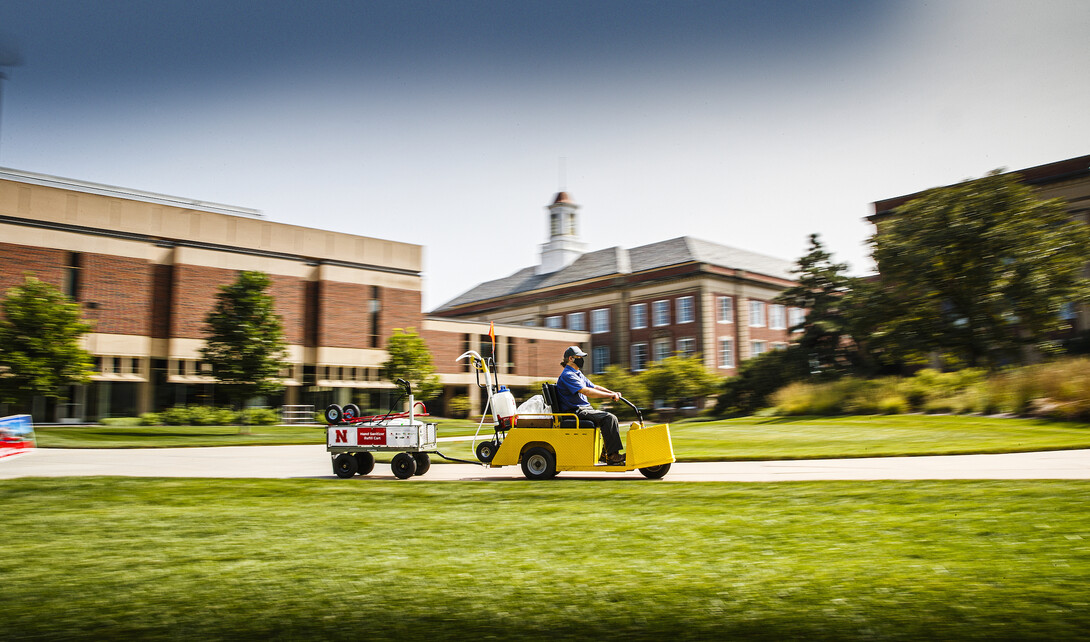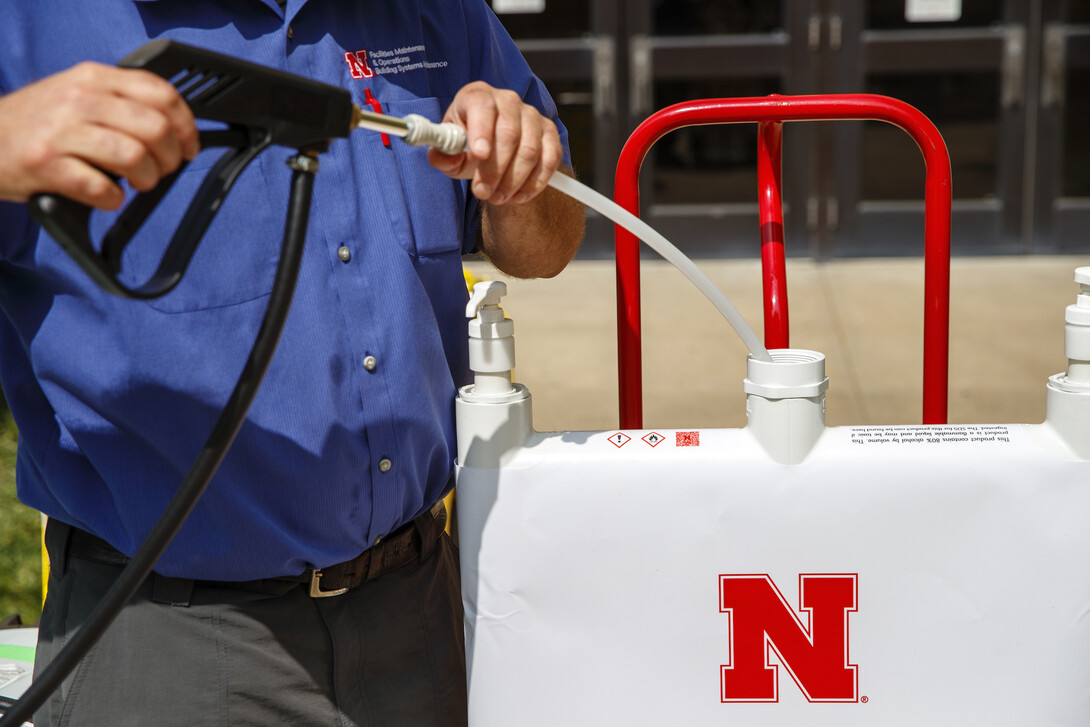
Each day, five University of Nebraska–Lincoln building maintenance personnel roll down every campus walkway and visit every building, delivering on a promise to offer students, faculty, staff and visitors a chance to defend against the global pandemic.
They leave no stone unturned as they traverse City and East campuses, checking and refilling every free-standing hand sanitizing station — which number more than 1,000 — and the wall dispensers in every elevator. There are also 486 classrooms, 88 piano rooms and 48 classrooms located at PKI on the Scott Campus with wall sanitizing stations containing hand sanitizer, disinfectant wipes, spray disinfectant and paper towels. Those get restocked, too.
The crew utilizes side-by-side ATVs and small trailers to do the job. Each trailer is equipped with 25-gallon tanks and spot sprayers, but building maintenance team members altered each sprayer with flexible tubing and a battery to automatically pump the sanitizer and disinfectant.

Keeping campus stocked in its battle against COVID-19 is a full-time endeavor, said Gabe Hampton, assistant director of building systems maintenance, and one that the team spent months planning.
“It’s non-stop,” Hampton said. “Every day, they’re doing the loop, to every building, every classroom. Each crew member hops in one and does their route, and they have everything with them.
“The only places they don’t go are buildings with University Housing, (Nebraska) Unions, Athletics and (Campus) Recreation. There, they fill their own and we supply the product.”
To organize the refilling and restocking routes, the crew relies on GIS mapping of campus buildings. The maps show where each sanitizing station, wall station, and elevator dispenser is located.
“It’s quite the process, but with time, it’s become more efficient,” Hampton said. “We have each of the stations documented on GIS, and once you learn where everything is, it’s a pretty quick process to get in and around each building and onto the next one.”
Back in April, members of the building systems team, led by Jim Jackson, associate vice chancellor of University Operations, and a team from University Housing developed the free-standing hand sanitizer dispensers, and quickly followed up with forming a plan to keep them refilled. Jackson’s team also began ordering in earnest — personal protective equipment, paper towels and disinfecting wipes — which was a prescient move.
“When campus closed down in March, we started planning for how we could open campus back up, and make sure we had all of our bases covered,” Hampton said. “We just started brainstorming and filling any gaps we saw and started ordering. If we couldn’t find something, we started creating new solutions.
“As far as thinking through different scenarios, and getting things prepped, I would say we feel like we are ahead of the curve.”

Right now, Hampton estimates the campuses are using 50 gallons of hand sanitizer per week, but Hampton and the team are now collecting data on usage for planning purposes.
“The data will help us figure out our usage, where and how much is being used, and if the usage is changing over time,” Hampton said. “And because we don’t have unlimited supplies, the data will help us figure out our reordering points.”







